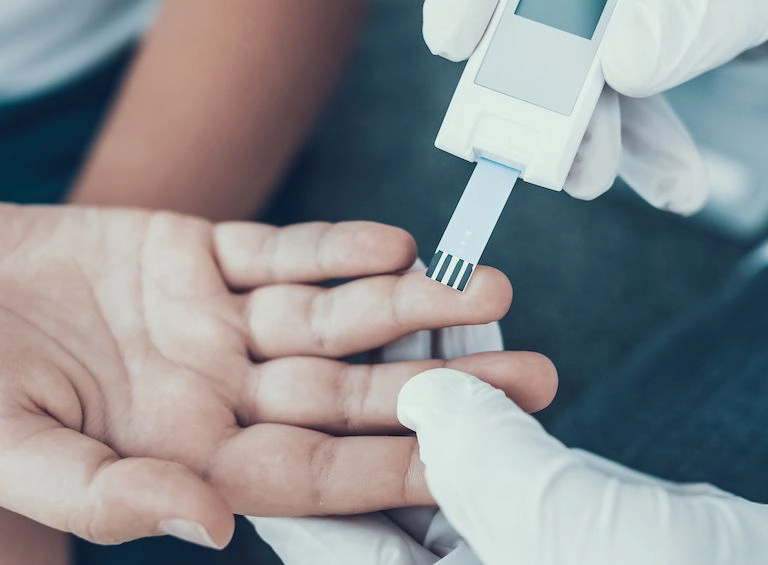Insulin Treatment Intensification with GLP - 1RA vs Basal - Plus/Basal - Bolus Regimens

GLP-1RA added to insulin provides similar efficacy with added benefit of reduced hypoglycaemia risk than basal-plus/basal-bolus regimens.
Main takeaway
This study demonstrates that glucagon-like peptide-1 receptor agonist (GLP-1RA) added to insulin has comparable glucose-lowering efficacy to basal-plus/basal-bolus (BP/BB) insulin, with added benefits of greater weight loss, reduced total daily insulin (TDI) dosage and lower incidence of hypoglycaemia in patients with type 2 diabetes (T2D).
Therefore, a significant number of patients receiving BP/BB regimens can potentially switch to GLP-1RA+insulin treatment, but those who would benefit the most have to be identified.
Why this matters
Guidelines recommend treatment intensification with GLP-1RA or BP/BB when basal insulin (BI) alone is insufficient in achieving optimal glycaemic targets.
Study design
-
This systematic review and meta-analysis of 13 randomised controlled trials (RCTs) included 5308 outpatients with T2D (weighted mean age, 59.3±8.9 years; males, 50%), with glycated haemoglobin (HbA1c) and body mass index of 6-11% and 20-45 kg/m2, respectively.
-
Patients were randomly assigned to either GLP-1RA+insulin or BP/BB insulin group.
-
Primary outcome: HbA1c change from baseline to follow-up.
-
Secondary outcomes: change in body weight (BW) and TDI from baseline to follow-up, incidence of hypoglycaemia and discontinuation because of lack of efficacy.
-
Funding: None.
Key results
Overall, 2744 patients received GLP-1RA+insulin and 2564 received BP/BB insulin regimens.
HbA1c reduction from 8.1% (weighted mean) at baseline to 7.0% at follow-up was similar between the GLP-1RA+insulin and BP/BB groups (difference, −0.06%; 95% CI, −0.14 to 0.02%; P=0.13; I2, 52%).
-
HbA1c reduction was significantly higher with long-acting GLP1-RA added to prandial insulin vs BP/BB (difference, −0.16%; 95% CI, 0.29 to −0.04%; P=0.01; I2=0%).
Weighted mean BW at baseline was 90 kg and was similar between both study groups (difference, 0.65 kg; P=0.11).
Weighted mean baseline TDI dose (57.1 IU/day) was similar between both study groups (difference, −1.7 [95% CI, −6.1 to 2.7] IU/day; P=0.45; I2=88%).
GLP-1RA+insulin therapy vs BP/BB was associated with:
-
greater weight loss: difference, −3.72 [95% CI, −4.49 to −2.95] kg; P<0.001; I2=89%;
-
reduced TDI dose: difference, −30.3 [95% CI, −41.2 to −19.3] IU/day; P<0.001; I2=94%; and
-
lower hypoglycaemia risk: risk ratio (RR), 0.46; 95% CI, 0.38-0.55; P<0.001; I2=99%.
The largest BW reduction was observed with short-acting GLP-1RA added to BI vs BP/BB (difference, −4.43 [95% CI, −6.27 to −2.59] kg; P<0.001; I2=94%).
The highest TDI reduction (difference, −44.0 [95% CI, −57.0 to −31.0] IU/day; P<0.001) and lowest hypoglycaemia risk (RR, 0.13; 95% CI, 0.11-0.16; P<0.001) were observed with a fixed-ratio combination of GLP-1RA and BI vs BP/BB.
Discontinuation because of lack of efficacy was similar between GLP-1RA+insulin and BP/BB treatments (RR, 1.87; 95% CI, 0.89-3.90; P=0.10; I2=0%).
Limitations
-
The scope of the study was limited.
-
Heterogeneity in all study outcomes was high.
-
Data on TDI and hypoglycaemia were not consistently reported in RCTs.
-
The effect of including patients with higher HbA1c and longer follow-up periods on study outcomes was not evaluated.
1. Castellana M, Cignarelli A, Brescia F, Laviola L, Giorgino F. GLP-1 receptor agonist added to insulin versus basal-plus or basal-bolus insulin therapy in type 2 diabetes: A systematic review and meta-analysis. Diabetes Metab Res Rev. 2019;35(1):e3082. doi: 10.1002/dmrr.3082.


.jpg/jcr:content/Bright%20study%20(1).jpg)
